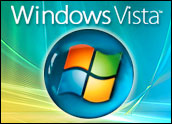
HP and Sony have collaborated on the creation of a next-generation digital audio tape (DAT) format, the two companies announced Tuesday.
Aimed at small and medium-sized businesses (SMBs) as well as enterprises with remote locations, the upcoming DAT 320 format provides improved performance and capacity over existing DAT drives, including the current generation DAT 160.
While the two tech firms are jointly developing the new version, both companies will separately offer their own DAT 320 tape drives and cartridges. The storage hardware is expected to hit the market during the first half of 2009.
“The market has developed to the point at which it feels right and proper for [HP and Sony] to come back together in order to do DAT 320. The whole objective is to continue to meet the ongoing needs for data protection and backup for small and medium[-sized] businesses who typically want to minimize the cost of ownership for a disaster recovery solution. And a DDS tape drive with a number of pieces of media does offer a very viable marketplace,” said Bob Conway, manager of tape product marketing for HP StorageWorks.
Doubling DAT
In the nearly 20 years since the first digital data storage shipped, more than 18 million drives have been shipped and over 400 million cartridges, Conway noted. The tape market will generate more than US$1.4 billion in 2009, according to an IDC forecast.
DAT 320 promises SMBs double the capacity and performance of the one-year old DAT 160 without doubling the price.
A single DAT 320 cartridge offers up to 320 GB of capacity compared with the 160 GB available on the DAT 160 format. The technology also offers backup speeds of up to 86 GB per hour with 2:1 data compression — almost twice the speed of DAT 160, according to Conway. “The time to fill a tape is about four hours, and in small businesses that are running 24 hours, the backup can be done overnight and then the tapes can be sent off site,” he said.
“DAT 160 drives from HP currently cost about $849, with a cartridge costing $36,” Conway told TechNewsWorld. “We’ve been shipping that product for about 12 months now, and we’ve seen … an average connect rate of six cartridges per drive. People can have a professional sort of media rotation scheme; so they’re minimizing risk through a media rotation scheme. And that allows a customer to obtain a disaster recovery and data protection solution for less than $1,200.
“In a fledgling company or a small company where costs have to be contained very closely, that is a very viable solution compared to other solutions on the marketplace,” he added.
Vive DAT Storage
The rollout of DAT 320 indicates that magnetic tape — and the DAT format in particular — is still alive, companies are still investing in it, and firms consider it a viable option for protecting and preserving data, explained Greg Schulz, founder and senior analyst at The StorageIO Group.
“With the continued shift towards disc-based backup solutions, tape has been declared dead; however, the reality is that existing tape users need enhancements to the technologies that they are using and rely upon, including DAT,” he told TechNewsWorld.
DAT 320’s ability to store more data in a given footprint can help to address financial costs, power usage and cooling floor space. For inactive and archive data or offline data storage needs, tape remains one of the greenest forms of data storage, Schulz concluded.



















































